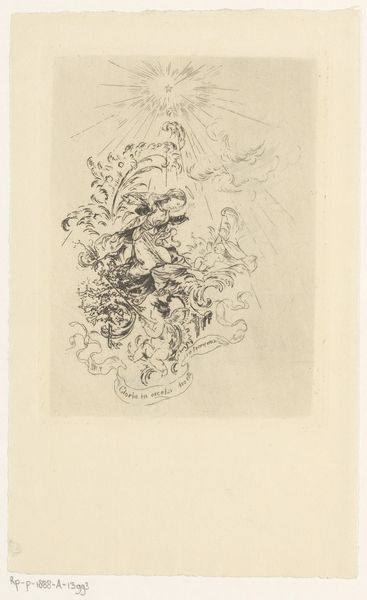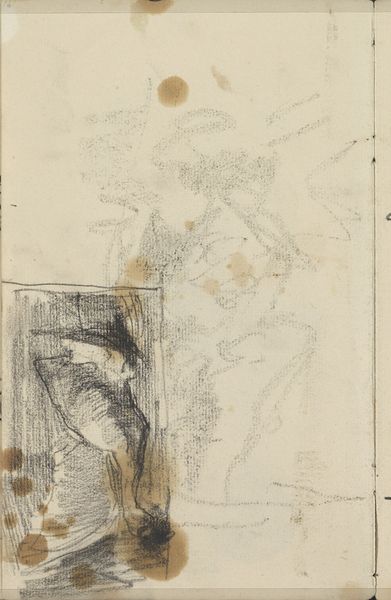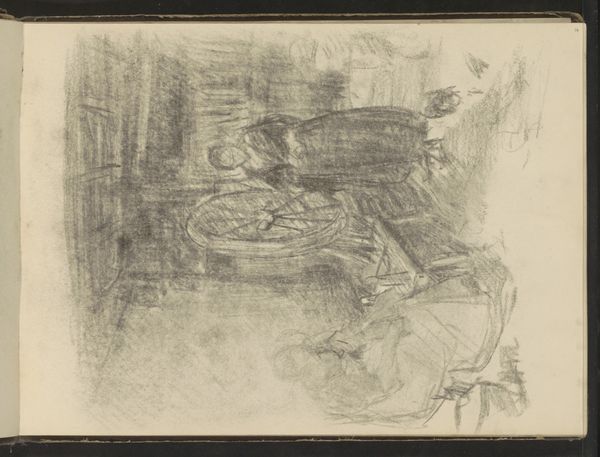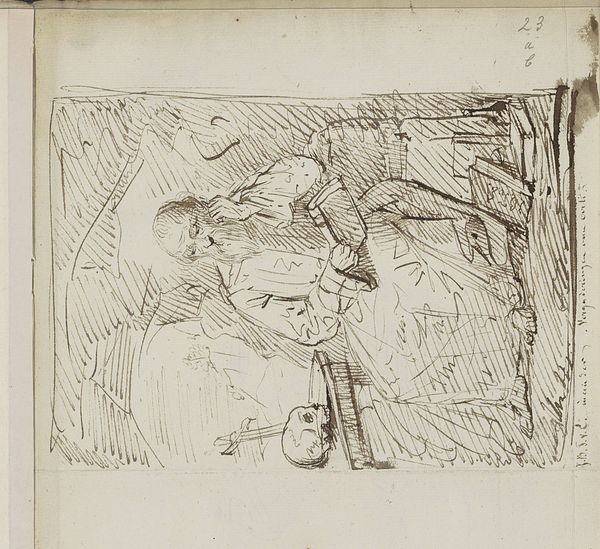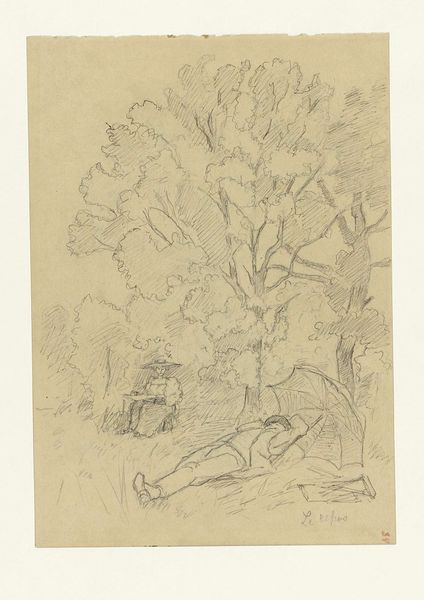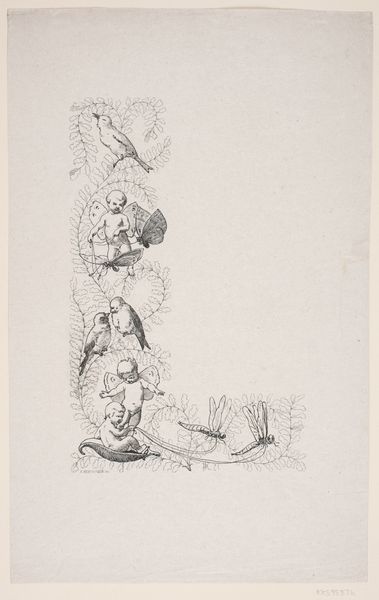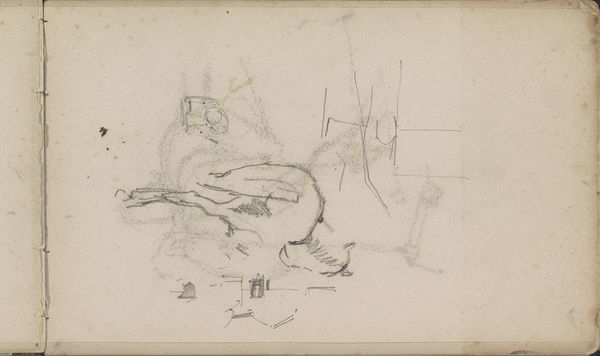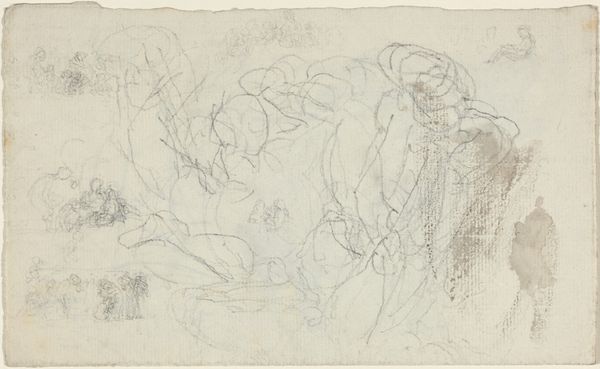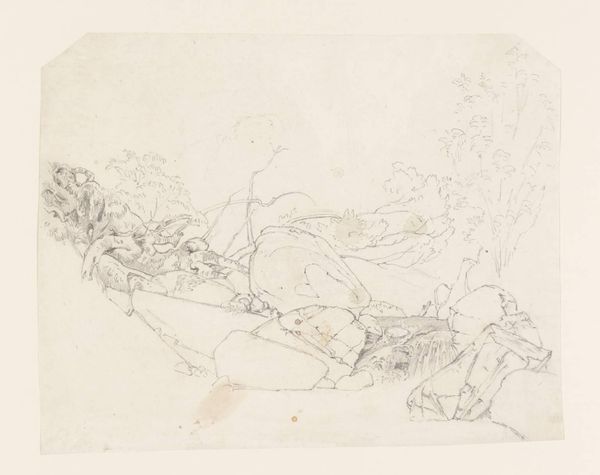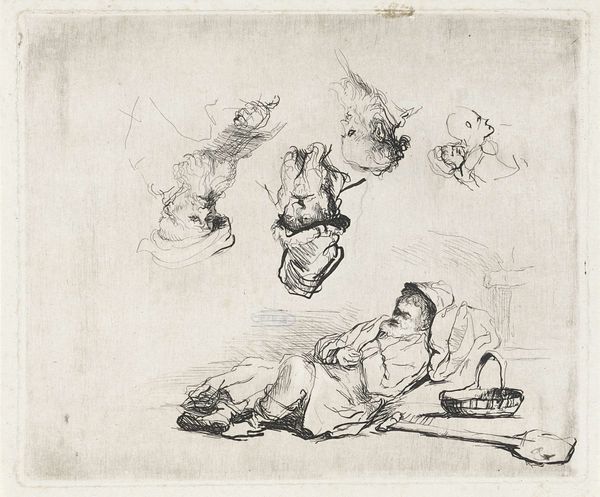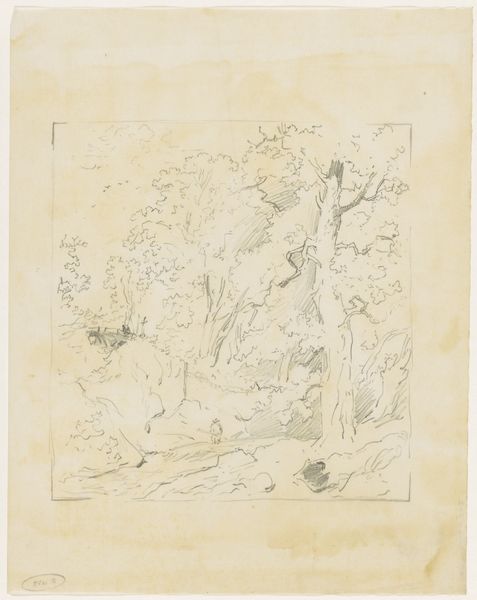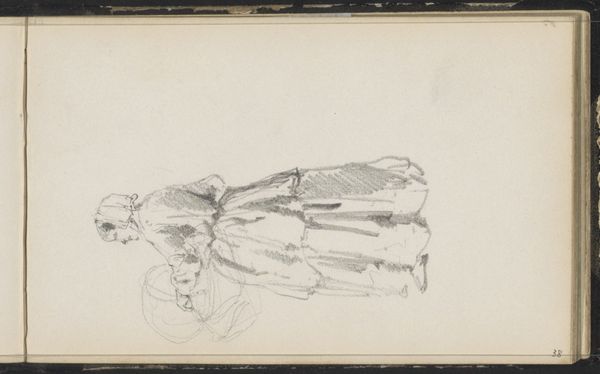
drawing, pencil
#
drawing
#
landscape
#
fantasy-art
#
figuration
#
romanticism
#
pencil
Dimensions: 5 5/16 x 4 7/8 in. (13.5 x 12.4 cm)
Copyright: Public Domain
Curator: Let's take a look at "The Last Drop," a pencil drawing on paper by Emanuel Leutze, dating roughly between 1816 and 1868. It’s currently part of the Metropolitan Museum's collection. Editor: My first impression is a strange mixture of delicate sketch work and a sort of mournful, exhausted pose from the reclining figure. The grayscale palette certainly adds to the melancholy. Curator: Leutze’s material choices speak volumes. Pencil allows for both detailed figuration and the atmospheric landscape style we see here. But, let’s also consider the implications of “scrapbook” in the title; these were commodities, produced to be sold. Who were his intended consumers? What sort of political viewpoints were he appealing to at this time? Editor: It’s interesting that you immediately jump to consumption habits; I can appreciate that angle. For me, the lines create forms and those are where the message lives. How the light plays across the figure’s torso versus how the pencil scribbles create texture within the surrounding foliage, how these all balance within the rectangular picture plane. Curator: The medium itself contributes to the thematic content, though. Graphite production and its availability played into what was accessible for artistic labor. A simple sketch like this might represent both accessible art and be viewed and sold to the masses. Its relative informality invites familiarity, thus making the artist’s message that much more persuasive, for whoever may see it, of course. Editor: True, there is an intimacy afforded by pencil; one is more able to read the artist’s process, their own labor. But what message is there? Beyond perhaps a romanticized vision of a mythic past. Look at how the diagonal lines move the eye around the form. The human shape and setting create this push and pull in the visual experience, creating dynamic visual balance overall. Curator: It's certainly a window into understanding how artwork circulated during that era, not just as aesthetic objects, but commodities deeply embedded within social and economic realities. Editor: Indeed, and appreciating the subtleties of composition invites a closer look that hopefully elicits emotions the artist was aiming for. A true reflection of intent I'd wager, but one we are both able to see when bringing different methods to analysis.
Comments
No comments
Be the first to comment and join the conversation on the ultimate creative platform.
